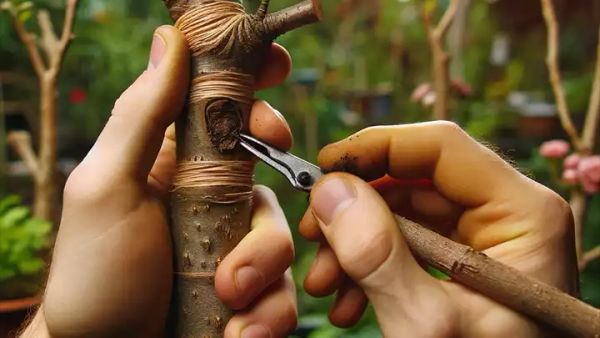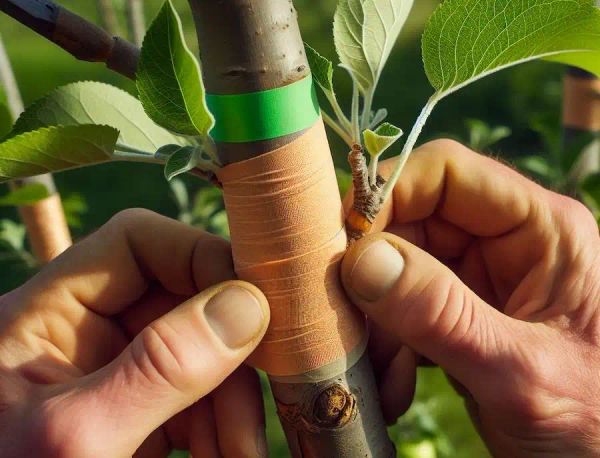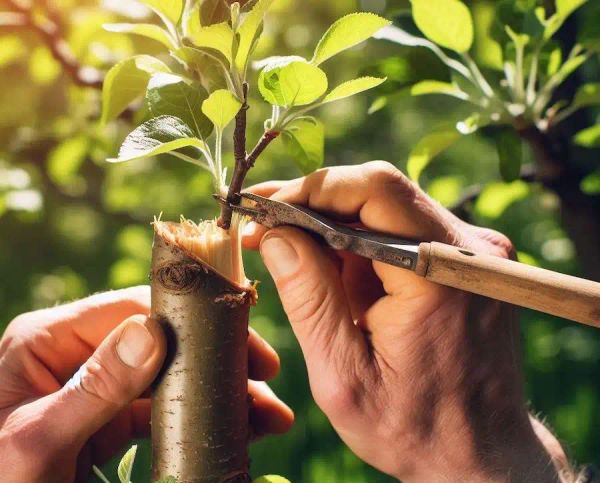Grafting is a technique that allows you to combine different plants to create a new, stronger plant. This method is often used in fruit tree propagation to combine the best features of two plants. If you’re interested in learning how to graft trees correctly and efficiently, keep reading!

1. Choosing the Right Time for Grafting:
Late winter or early spring, just before the sap starts to flow (bud break), is the best time for grafting. This timing allows the graft to heal and grow during the growing season.
2. Selecting Scion and Rootstock:
When grafting, you need to choose a scion and a rootstock. The scion should be taken from a healthy, disease-free tree that is one year old and has 2-3 buds. The rootstock should also be healthy and well-established, and compatible with the scion. The size of the rootstock can vary depending on the grafting method used.
3. Common Grafting Techniques:
There are several grafting techniques to choose from, depending on the size of the rootstock and the scion:
Whip Grafting: This method is best for rootstocks and scions of similar size. It involves making matching diagonal cuts on both the scion and rootstock and joining them so that the cambium layers (green layer under the bark) meet.
Cleft Grafting: Ideal for larger rootstocks, cleft grafting requires making a vertical cut in the rootstock and inserting a scion with a wedge-shaped end into the slit.
Bud Grafting (Budding): This technique involves inserting a bud into a cut in the rootstock. It is commonly used during the summer when buds are mature.
4. Grafting Under the Bark:
Grafting under the bark is a technique suitable for large rootstocks and when the bark easily separates from the wood, especially in the spring. Here’s how to do it:
- Make a T-shaped cut in the bark of the rootstock.
- Carefully peel back the flaps of bark.
- Insert the scion (which should have a few buds and a small piece of wood attached) into the opening.
- Secure the scion in place, ensuring it’s in contact with the cambium layer of the rootstock.
5. Aftercare of Grafts:
To ensure the success of your grafts, follow these aftercare tips:
- Seal the graft with grafting wax or tape to prevent drying out.
- Provide adequate water and avoid fertilizing until the graft has fully taken.
- Monitor the graft for signs of growth or failure, adjusting care as needed.

6. Tips for Success:
Here are a few additional tips to increase your chances of successful grafting:
- Sanitize all tools before grafting to prevent the spread of disease.
- Make clean, precise cuts to ensure good contact between the cambium layers.
- Label grafted plants for future reference.
- Remember to be patient as some grafts may take time to establish.
Grafting can be a rewarding process, allowing you to create unique combinations of fruit trees or repair damaged trees. Each grafting technique has its advantages, so choose the one that suits your needs. With practice and care, you’ll achieve successful and productive growth in your garden or orchard. Don’t forget to share this article with your friends to inspire them too!





